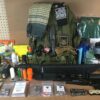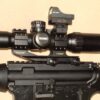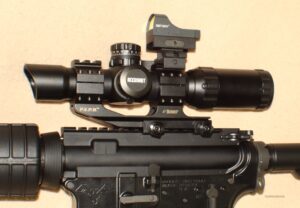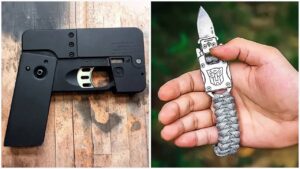
A practical, up-to-date guide to picking the right ballistic protection for daily use — focusing on comfort, legal safety, threat assessment and real-world performance.
Choosing body armour for everyday carry (EDC) is about trade-offs. You want protection, but you also need mobility, comfort, and a solution that fits your daily routine — whether that’s a concealable vest under a shirt, a discreet plate in a travel jacket, or a removable insert for a work bag. This guide helps you decide between soft armour (flexible ballistic panels) and hard armour plates (rigid ceramic, polyethylene or steel plates) by explaining threat levels, materials, ergonomics, and legal and maintenance considerations. Where relevant, we use common search terms so you can find the best ballistic plates for everyday carry, concealable body armor, NIJ Level guidance, and practical buying tips.
Start with the core question: what threat are you preparing for?
Make your choice based on the realistic threats you may face, not worst-case movie scenarios.
- Soft armour (often rated NIJ Level II or IIIA) is designed to stop most handgun threats: common pistols and many revolvers. These panels are lightweight, flexible and easy to conceal — suitable for people who want discreet everyday protection against close-range handgun attacks.
- Hard armour plates (commonly NIJ Level III or IV) are intended to defeat rifle rounds or high-velocity threats. Plates are rigid, heavier, and typically used in plate carriers or covert inserts. They offer higher protection but at the cost of bulk and weight.
If your concern is street crime or personal safety in urban settings, soft armour / Level IIIA is often the practical choice for EDC. If you face high-risk situations where rifle fire is a plausible threat (security contractors, certain high-risk travel), plate options may be necessary.
Understand NIJ ratings and what they mean
The NIJ (National Institute of Justice) standard is the commonly referenced benchmark for ballistic protection. Quick orientation:
- Level II / IIa — protects against many lower-power handguns (smaller calibres).
- Level IIIA — protects against most common pistol threats including .44 Magnum and 9mm submachine gun rounds. This is the standard for concealable soft vests.
- Level III — rated to stop rifle rounds like 7.62×51 NATO (on certain test conditions) when using hard plates.
- Level IV — rated to stop at least one hit of armour-piercing rifle ammunition; high level protection found in ceramic or polyethylene plates.
When shopping, always verify the manufacturer’s NIJ test certificate or lab report. Keywords to search: NIJ certified plates, NIJ Level III vs IIIA, certified concealable armor.
Material choices: weight, blunt trauma, and multi-hit performance
Material choice matters for comfort, weight and how trauma is handled.
- Aramid (Kevlar, Twaron) — soft armour: Flexible, reliable, comfortable. Performs well against handgun threats and is common in concealable vests. Advantages: breathability, lower profile. Disadvantages: bulk for higher protection levels and reduced rifle protection capability.
- Ultra-high-molecular-weight polyethylene (UHMWPE / PE) — hard plates: Very lightweight compared with steel or ceramic for comparable rifle protection. Excellent multi-hit performance and corrosion-resistant. Downsides: more expensive and can be thicker for multi-curve shapes.
- Ceramic composite plates (boron carbide, alumina) — hard plates: Highly effective at defeating high-velocity rifle rounds. Ceramic shatters on impact but the backing (PE or aramid) catches fragments. Good balance of protection vs weight but can be brittle after impact and typically bulkier.
- Steel plates: Durable and inexpensive, but heavy and prone to spalling (secondary fragmentation) unless coated and paired with anti-spall backing. Steel is less comfortable for everyday carry and often used for vehicle or static protection.
For EDC, many prefer thin UHMWPE plates or soft aramid panels (Level IIIA) because they minimise weight and profile while providing meaningful handgun protection.
Concealability & ergonomics — the everyday factors
If you plan to carry armour daily, the following matter more than headline protection numbers:
- Profile: How visible is it under a shirt or jacket? Soft panels and concealment cut plates (SAPI/curved “covert” shapes) work better under clothing.
- Weight distribution: A 10–12 lb plate in a carrier is tiring for long wear. Soft panels weigh far less and are more practical for all-day use.
- Range of motion: Rigid plates reduce flexibility and comfort, affecting driving, reaching and general movement.
- Thickness and edge shape: Thinner inserts fit more comfortably in slim vests and concealment carriers.
- Breathability & heat: Full-coverage plates trap heat — important in warmer climates. Consider vented carriers, sweat liners, and breathable fabric.
If your priority is daily wear, lean toward soft armor Level IIIA or thin PE plates with a concealable cut. If you only need protection in short, high-risk periods (travel, specific events), a removable hard plate in a discreet carrier may be suitable.
Coverage vs mobility — finding the balance
Higher protection often means more coverage — but bigger plates limit mobility. Decide what you want protected:
- Front only vs front + back: Front coverage protects vital organs. Back plates are recommended if expecting sustained threats from multiple directions. Side plates add coverage but increase bulk.
- SAPI/ESAPI vs curator-cut plates: Full-size SAPI plates offer more coverage; smaller “covert” or shooter cuts reduce size and improve arm movement. Choose based on activity and threat scenario.
For everyday carry, many choose front-only or front+back small-profile plates with a shooter cut for better arm mobility.
Legal and ethical considerations — always check local laws
Laws about body armour vary widely. In some places, civilian ownership of certain armour types is restricted or regulated. Key steps:
- Check local and national legislation for armour possession and use.
- Avoid items that resemble prohibited or military-grade equipment if regulations bar them.
- Be mindful of workplace policies — some employers forbid armour.
- Use armour responsibly; it is a defensive tool, not a substitute for avoidance, de-escalation or professional training.
When in doubt, consult a local authority or legal advisor before purchasing or carrying armour.
Practical buying tips & trusted keywords to look for
When shopping for plates or panels, search for and verify:
- NIJ certified / lab test reports — “NIJ 0101.06 certified” or updated standard.
- Manufacturer reputation — established brands with warranty and customer service.
- Material details — UHMWPE, ceramic composite, aramid.
- Plate cut/shape — “SAPI,” “shooter cut,” “covert insert.”
- Weight and thickness — listed in pounds / kg and mm.
- Multi-hit rating and backface deformation (how hard the impact feels on the rear).
- Warranty & return policy — especially important for sizing and defects.
- Ballistic trauma plates vs trauma pads — trauma pads reduce blunt force; look for trauma mitigation features.
Useful search phrases: best concealable body armor 2025, lightweight UHMWPE plates, NIJ Level IIIA vest for concealed carry, ceramic rifle plates vs polyethylene.
Care, maintenance and storage
Good care extends armour life and maintains ballistic integrity:
- Follow manufacturer care instructions. Avoid machine washing sealed soft panels unless specified.
- Keep dry and out of direct sunlight. UV exposure degrades fibers and composites.
- Replace soft panels after 5–7 years (manufacturer guidelines vary) or immediately after a ballistic hit or significant impact.
- Store flat or in designated carrier — avoid folding soft panels which can damage fibers.
- Inspect regularly for delamination, cracks in ceramic, or visible wear.
Training, fit and human factors
Protection is only useful if you can use it correctly.
- Proper fit: Armour must sit at the right height (covering heart and lungs) without restricting breathing or movement. Try before you buy if possible.
- Wear familiarity: Practice moving, sitting, driving and performing routine tasks while wearing the armour to ensure it won’t impede daily life.
- Medical & trauma training: Basic first-aid and bleeding control training greatly amplify the protective value of any armour choice.
Decision checklist — hard vs soft armour for everyday carry
Use this quick checklist to make a practical choice:
- Do you expect handgun threats more than rifles? → Soft armour (Level IIIA).
- Do you need protection only occasionally (travel, specific events)? → Removable hard plate (PE or ceramic) in a covert carrier.
- Is daily comfort and concealment the priority? → Soft panels or thin PE covert plates.
- Is weight tolerance low (long wear, driving)? → avoid heavy steel plates.
- Can you verify NIJ certification and manufacturer support? → Proceed.
- Have you checked local laws and employer policies? → Required.
Final word — pick protection that fits your life
There’s no single “best” choice for everyone. For most civilians seeking everyday protection, NIJ Level IIIA soft armour or lightweight PE covert plates provide a strong balance of concealability, comfort and meaningful protection against likely handgun threats. Hard ceramic or polyethylene plates are powerful tools for high-risk contexts but come with trade-offs in weight, bulk and daily comfort.
Always priorities legality, fit, manufacturer certification and training. Armour is one layer of personal security — combine it with situational awareness, avoidance, communication plans and basic medical preparedness for a rounded and realistic safety strategy. If you’d like, tell me your typical daily activities and location and I’ll recommend specific armour types and design features that match your real-world needs.
Also Read: How to Prepare a Family Survival Pack Using Tactical Gear Store Finds








